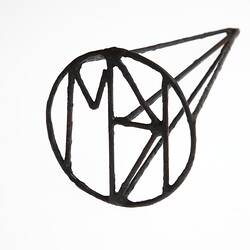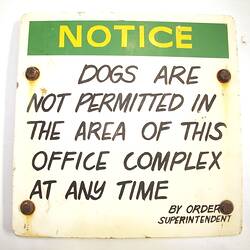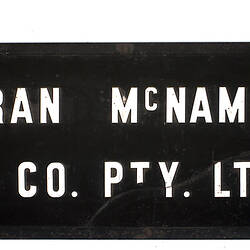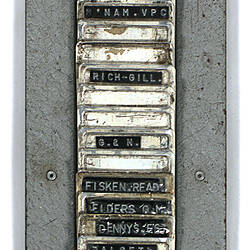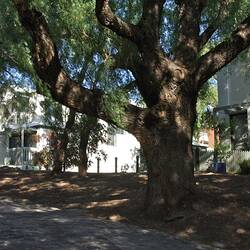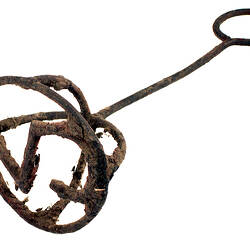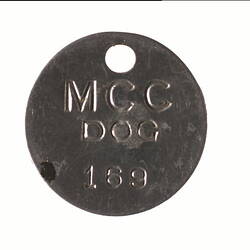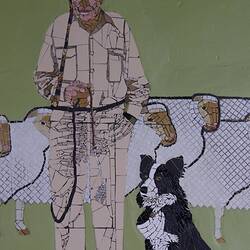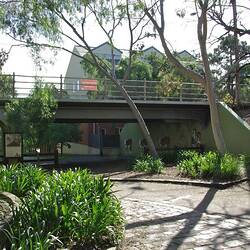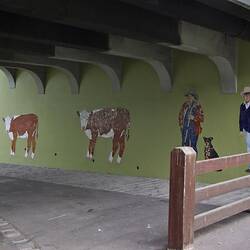Animals leaving the Newmarket Saleyards crossed Epsom Road on their way to the City Abattoirs, Angliss meatworks or further afield. Up until the early 1900s two railway gates operated at the entrance to and from the abattoirs and Newmarket Saleyards from Epsom Road. In 1911, a bridge and underpass was designed and built by John Monash and the Reinforced Concrete and Monier Pipe Construction Co., replacing a level crossing. The underpass became known as "The Back Gate".
A Melbourne City Council employee worked at the "Back Gate" as a stock counter, counting the animals as they passed through the gates under Epsom Road in order to tally up dues owed to the Council. To keep a count on livestock moving into and out of the Yards, a pass system was used. Stock numbers consigned from Stock Agents to each drover were indicated on the pass and were required to tally with the number of animals passing through the Back Gates. Drovers handed the pass to the stock counter as the animals were moved out of the Saleyards. The pass or receipt was used by Council to tally up what was owed to them. Each animal that came through the Saleyards was counted and yard dues were taken out of the sale price of each animal. Yard Dues paid for all works and maintenance at the yards by the Melbourne City Council who administered both the Saleyards and the City Abattoirs.
References:
Living Museum of the West 199-, The story of Newmarket Saleyards, Living Museum of the West, Kensington, Victoria.
Vincent, K. 1992, On the fall of the hammer : a personal history of Newmarket saleyards, Lee White ed, State Library of Victoria, Melbourne.
Victorian Heritage Database; http://vhd.heritage.vic.gov.au/places/heritage/3105
More Information
-
Keywords
-
Authors
-
Article types

